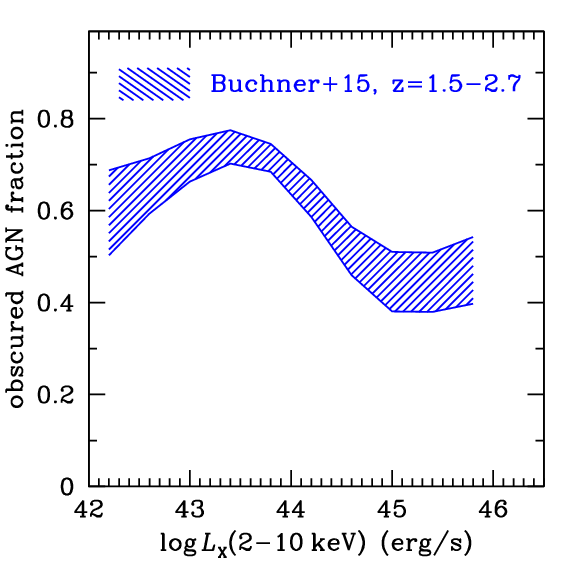
Luminosity dependence of the obscured AGN fraction
A large fraction of black holes in the Universe grow their masses behind a screen of gas and dust clouds that block direct view to the accretion process and the Active Galactic Nucleus (AGN). Observational constraints on the fraction of obscured AGN as a function of redshift and accretion luminosity provide information on the properties, distribution and evolution with cosmic time of the obscuring material in the vicinity of active supermassive black holes.
In Buchner et al. (2015) we showed that the luminosity dependence of the obscured AGN fraction is more complex that previously thought. The top plot shows that this fraction is a non-monotonic function of accretion luminosity. It decreases at both bright and faint luminosities. Moreover there is also evidence that the position of the peak depends on redshift. These observational constraints have implications on our understanding of the structure and origin of the obscuring material in which AGN are embedded.
The bottom plot illustrates different physically motivated scenarios that could explain the observed trends. A picture that includes the production of gas and dust clouds from the accretion disk and the impact of AGN related feedback process on the obscuring material is favoured by the observations. More details in Buchner et al. (2015).
